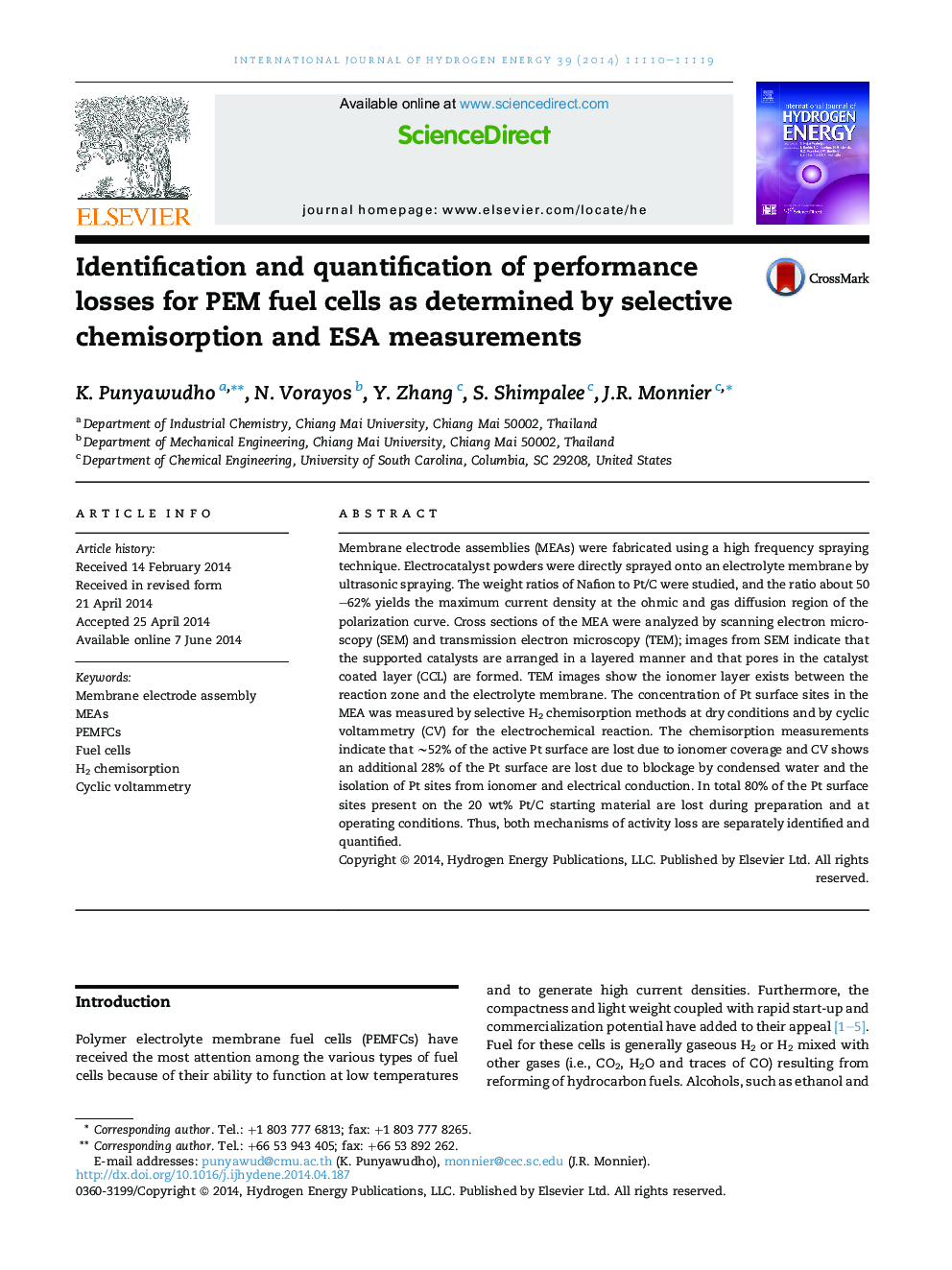| Article ID | Journal | Published Year | Pages | File Type |
|---|---|---|---|---|
| 1272254 | International Journal of Hydrogen Energy | 2014 | 10 Pages |
•The first time where Pt surface site concentrations of MEAs have been analyzed by H2 chemisorption.•TEM was used primarily to investigate the physical bond between the coated layer and electrolyte membrane.•The loss of active Pt surface sites in MEAs were identified by two mechanisms.
Membrane electrode assemblies (MEAs) were fabricated using a high frequency spraying technique. Electrocatalyst powders were directly sprayed onto an electrolyte membrane by ultrasonic spraying. The weight ratios of Nafion to Pt/C were studied, and the ratio about 50–62% yields the maximum current density at the ohmic and gas diffusion region of the polarization curve. Cross sections of the MEA were analyzed by scanning electron microscopy (SEM) and transmission electron microscopy (TEM); images from SEM indicate that the supported catalysts are arranged in a layered manner and that pores in the catalyst coated layer (CCL) are formed. TEM images show the ionomer layer exists between the reaction zone and the electrolyte membrane. The concentration of Pt surface sites in the MEA was measured by selective H2 chemisorption methods at dry conditions and by cyclic voltammetry (CV) for the electrochemical reaction. The chemisorption measurements indicate that ∼52% of the active Pt surface are lost due to ionomer coverage and CV shows an additional 28% of the Pt surface are lost due to blockage by condensed water and the isolation of Pt sites from ionomer and electrical conduction. In total 80% of the Pt surface sites present on the 20 wt% Pt/C starting material are lost during preparation and at operating conditions. Thus, both mechanisms of activity loss are separately identified and quantified.
